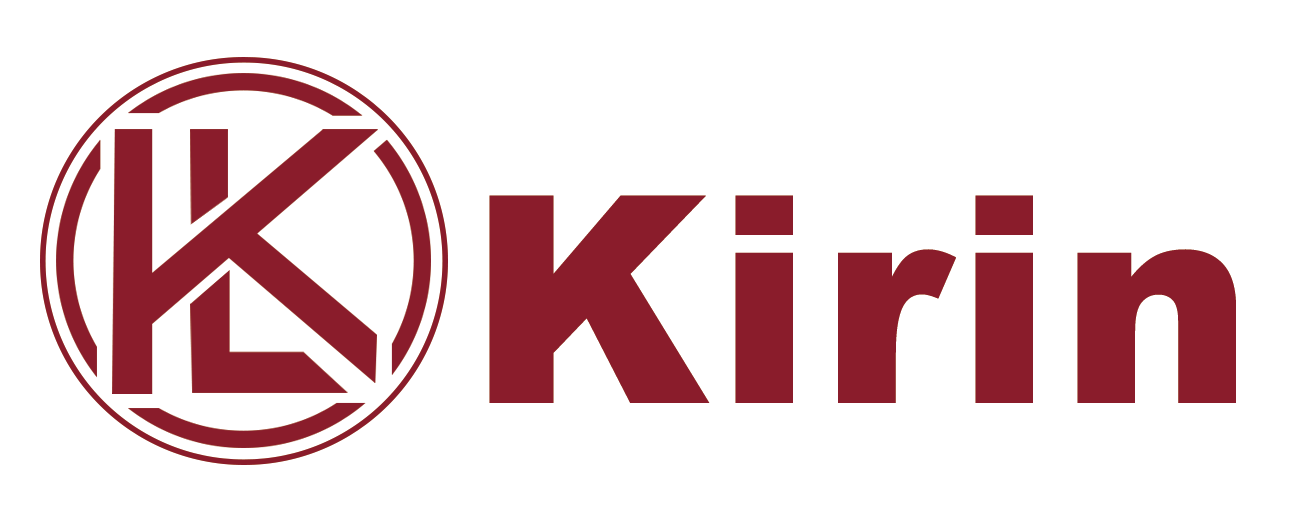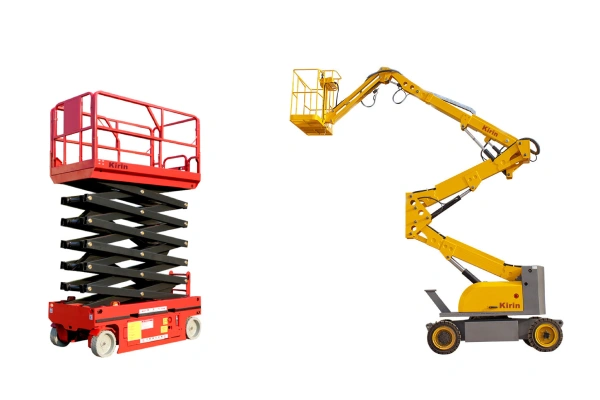When it comes to reaching impressive heights for construction, maintenance, or industrial tasks, boom lifts are indispensable. But the market offers two primary power sources: electric and diesel. Deciding which is better, an electric boom lift or a diesel boom lift, depends heavily on your specific project needs, environment, and long-term operational considerations. This blog post will delve into the characteristics of both, provide a head-to-head comparison, and help you determine the ideal choice for your next job.
Introduction
Boom lifts, also known as aerial work platforms or cherry pickers, are essential equipment for tasks requiring elevated access. They consist of a platform or bucket attached to a hydraulic arm, allowing workers to reach various heights and angles. The choice between an electric boom lift and a diesel boom lift is a crucial one, impacting everything from operational costs to environmental footprint and job site flexibility.
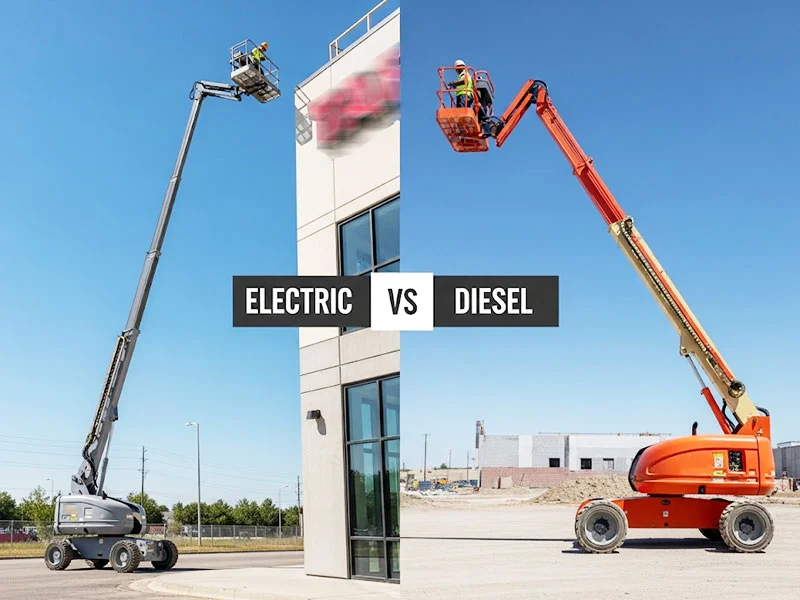
Understanding Electric Boom Lifts
An electric boom lift is powered by batteries, offering a clean, quiet, and efficient solution for aerial access. These machines are typically designed with an electric-powered engine, making them highly suitable for specific applications.
Key characteristics of an electric boom lift:
- Power Source: Primarily rechargeable batteries, often lead-acid or lithium-ion, which drive electric motors for lift and propulsion.
- Emissions: Zero emissions during operation, making them environmentally friendly.
- Noise Level: Significantly quieter than diesel counterparts.
- Maintenance: Generally lower maintenance due to fewer moving parts and no need for fuel-related servicing.
- Applications: Ideal for indoor use, sensitive environments like hospitals, schools, retail spaces, warehouses, and urban areas with strict noise or emission regulations. An electric articulating boom lift is particularly adept at navigating tight spaces and reaching up-and-over obstacles indoors.
- Maneuverability: Often more compact and designed for precise movements in confined spaces. Many models feature non-marking tires to protect delicate flooring.
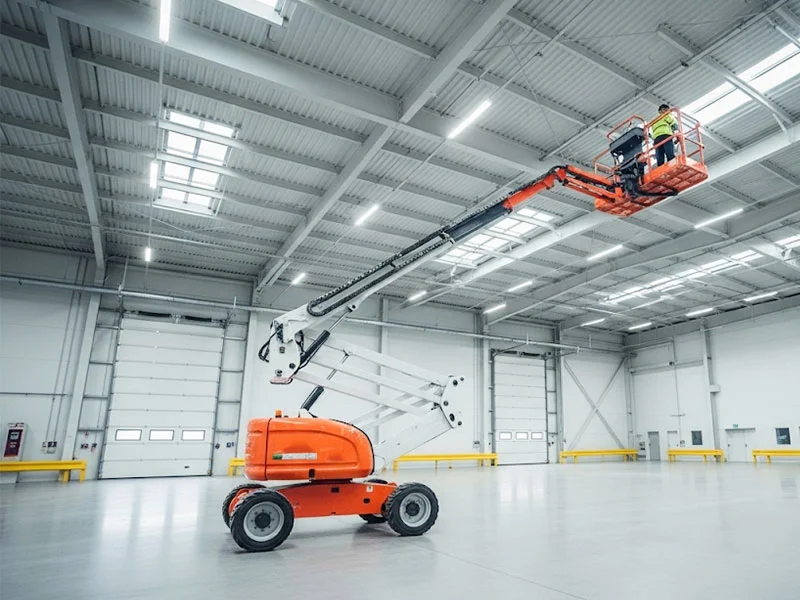
Understanding Diesel Boom Lifts
Diesel boom lifts are powered by internal combustion engines that run on diesel fuel. These machines are known for their raw power and endurance, making them workhorses for demanding outdoor applications.
Key characteristics of a diesel boom lift:
- Power Source: Diesel engine, which provides significant power and extended run times.
- Emissions: Produce exhaust fumes, including greenhouse gases and particulates.
- Noise Level: Louder in operation due to the combustion engine.
- Maintenance: Higher maintenance requirements due to the complexity of the engine, including oil changes, fuel filter replacements, and emission system checks.
- Applications: Best suited for outdoor construction sites, rough terrain, large-scale building projects, and other heavy-duty applications where power and continuous operation are paramount.
- Maneuverability: Often equipped with 4×4 drive and oscillating axles for superior traction and stability on uneven or unpaved surfaces.
- Lifting Capacity & Reach: Generally offer higher lifting capacities and greater horizontal/vertical reach compared to electric models.
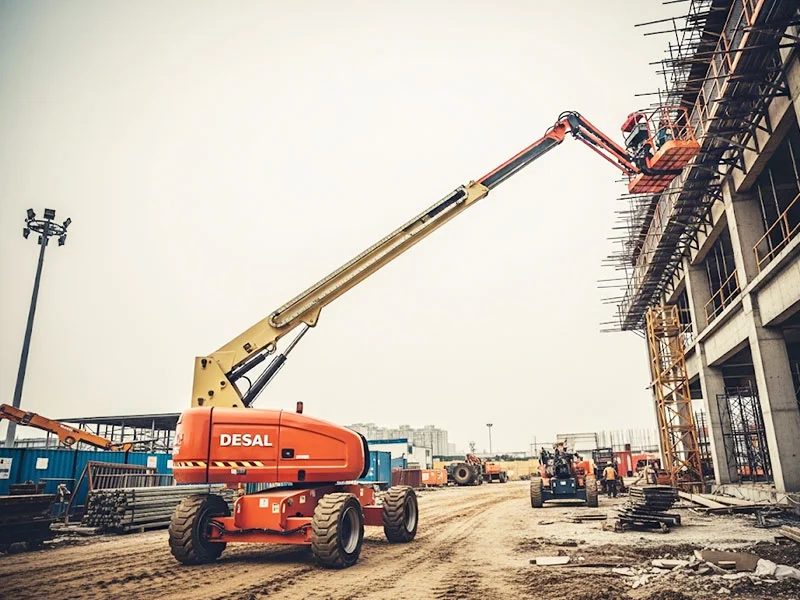
Head-to-Head Comparison
To help you visualize the differences, here’s a direct comparison between an electric boom lift and a diesel boom lift:
| Feature | Electric Boom Lift | Diesel Boom Lift |
| Power Source | Rechargeable Batteries (Lead-acid, Lithium-ion) | Diesel Internal Combustion Engine |
| Emissions | Zero Emissions | Produces Exhaust Fumes |
| Noise Level | Very Quiet | Loud |
| Environment | Ideal for Indoor, Sensitive, and Urban Areas | Ideal for Outdoor, Rugged, and Open Construction Sites |
| Maintenance | Lower (Fewer moving parts, no engine fluids) | Higher (Engine servicing, fuel system) |
| Operating Cost | Lower (Electricity often cheaper than diesel fuel) | Higher (Fuel costs, more frequent maintenance) |
| Run Time | Limited by battery life (requires recharging) | Longer (Refuel as needed) |
| Performance | Excellent for precision, tight spaces | Superior power, lifting capacity, rough terrain ability |
| Terrain | Best on smooth, level surfaces (some rough terrain electric models exist) | Excels on rough, uneven, and unpaved terrain |
| Initial Cost | Often lower purchase price for some models | Can be higher due to more complex engine systems |
Factors to Consider When Choosing
When deciding between an electric boom lift and a diesel boom lift, consider the following critical factors:
1.Work Environment: This is arguably the most crucial factor.
- For indoor projects, confined spaces, or areas with strict air quality and noise regulations (e.g., hospitals, data centers, food processing plants), an electric boom lift is the undisputed champion.
- For outdoor construction, mining, or industrial sites with uneven terrain and ample ventilation, a diesel boom lift will offer the necessary power and endurance.
2.Project Duration and Intensity:
- If your project requires continuous, long-duration operation without access to charging points, a diesel lift might be more practical as it can be quickly refueled.
- For tasks with intermittent use or where charging infrastructure is readily available, an electric boom lift can be highly efficient. Modern battery technology in electric boom lifts is constantly improving, offering longer run times.
3.Lifting Capacity and Reach:
- If your job demands lifting exceptionally heavy loads or reaching extreme heights and horizontal distances, diesel boom lifts generally offer greater capabilities.
- For standard lifting requirements and where precise positioning in tight spaces is key, an electric boom lift or electric articulating boom lift can be perfectly adequate.
4.Budget and Operating Costs:
- While the initial purchase price of an electric boom lift can sometimes be lower, consider the long-term operating costs. Electricity is typically cheaper than diesel fuel, and electric lifts have fewer wear parts, leading to reduced maintenance expenses.
- Diesel lifts incur ongoing fuel costs and more frequent, complex maintenance.
5.Environmental Regulations and Sustainability Goals:
- If your company prioritizes reducing its carbon footprint and adhering to environmental regulations, an electric boom lift aligns perfectly with sustainability initiatives.
- Some urban areas and construction sites are imposing stricter emissions standards, making electric models a future-proof choice.
6.Noise Sensitivity:
- Working in residential areas, near offices, or during night hours demands quiet operation. An electric boom lift minimizes noise pollution, improving working conditions and reducing disturbances.
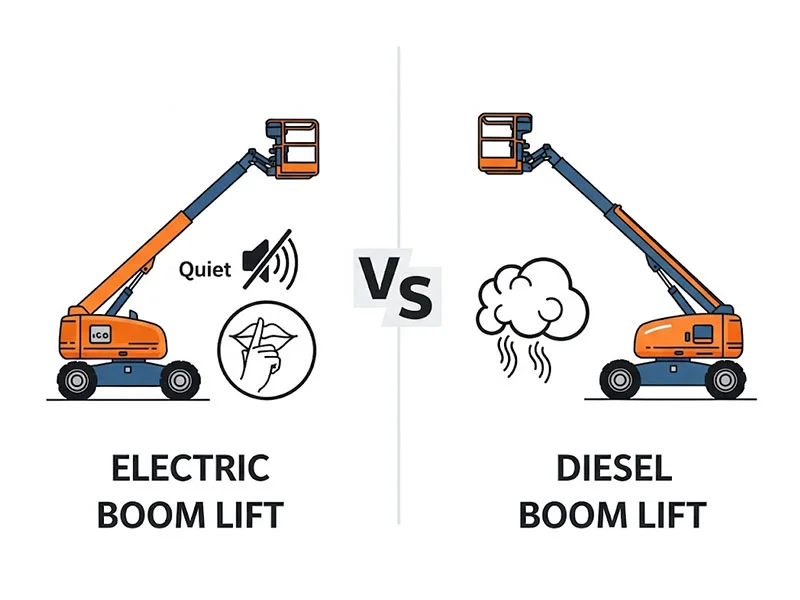
Conclusion
Both electric boom lifts and diesel boom lifts are powerful and versatile pieces of equipment, each excelling in different scenarios. The “better” choice truly depends on a thorough evaluation of your specific project requirements. If you need a quiet, emission-free machine for indoor work or environmentally sensitive areas, an electric boom lift is likely your best bet. If rugged outdoor performance, long operating hours, and maximum lifting power are your priorities, a diesel boom lift will serve you well.
When considering an electric boom lift for sale or exploring electric boom lifts for sale, remember to weigh these factors carefully to make an informed decision that enhances productivity, ensures safety, and aligns with your operational goals.
FAQs
Q1: Can an electric boom lift be used outdoors?
A1: While an electric boom lift is ideal for indoor use due to zero emissions and quiet operation, many modern electric models are designed with features that allow for outdoor use on firm, level surfaces. Some even come with rough terrain capabilities.
Q2: Are electric boom lifts more expensive than diesel ones?
A2: The initial purchase price can vary depending on the model, brand, and features. However, electric boom lifts often have lower overall operating costs due to cheaper electricity and reduced maintenance needs compared to diesel models.
Q3: How long does the battery last on an electric boom lift?
A3: Battery life varies significantly by model, battery type (lead-acid vs. lithium-ion), and usage intensity. Many electric boom lifts are designed to provide a full day’s work on a single charge, with modern lithium-ion batteries offering even longer run times and faster charging.
Q4: What are the main benefits of an electric articulating boom lift?
A4: An electric articulating boom lift offers excellent “up and over” capabilities, allowing it to navigate around obstacles. Coupled with its electric power, it’s perfect for complex indoor tasks requiring precise positioning, quiet operation, and zero emissions in tight or sensitive environments.
Q5: Where can I find electric boom lifts for sale?
A5: You can find electric boom lifts for sale through equipment dealerships, rental companies that also sell used equipment, and online marketplaces specializing in heavy machinery. It’s advisable to consult with suppliers to match the right electric boom lift to your specific needs.
